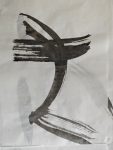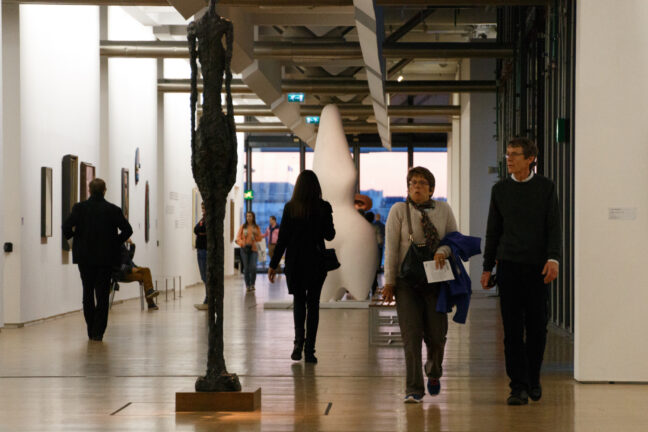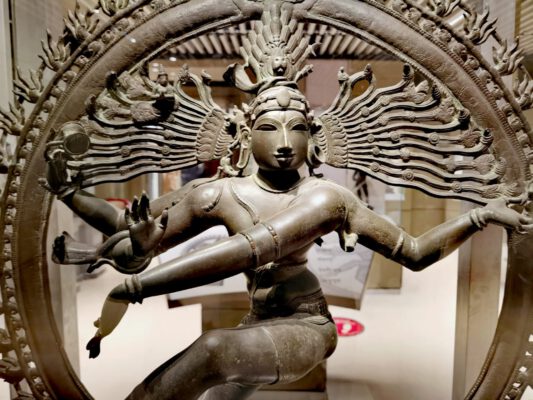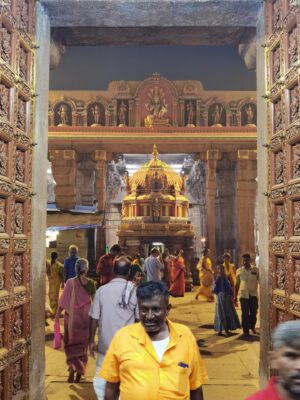II love complexity, but sometimes also radical simplification - in order to gain some clarity. For example, the history of ideas in the visual arts. In Europe, after the great migration of peoples, the history of art can be sketched as the history of ideas in woodcut form:
- In medieval art, stories were told visually - mainly the stories of the Bible. Most people could not read, let alone Latin or Greek. The wood panel painting of the altars is therefore a kind of comic, and just as free in the spatial order, perspective and relationship of the objects.
- In the Renaissance, construction principles of the mind were applied: Central perspective, color theory, visual effects such as sfumato, etc... The point was to show that artists could construct an illusion.
- In the Baroque era, the space was contained. The church space was folded, the senses stimulated, the painting seduced, the (art) objects stood for themselves.
- In the Rococo period, the nobility was amused. Sometimes very poor taste and interior design served as a spectacle - courtly, decadent.
- Classicism was an ethical correction. The classical values and principles of antiquity were revived.
- Realism was now, for the first time, really about artistically capturing the world as we think it is. Pretty and ugly, banal and uplifting...
- In Impressionism, then, the philosophical reflection on our own perceptual apparatus. After all, we can only depict what we perceive. The reality beyond our senses eludes representation.
- Abstraction, which is not really an abstraction at all, is about inner forms of the mind.
- …
A list of such radical simplifications could be made as long as you like. But it is nice to see that there is a dialectical movement here. Something new is tried out until it is recognized that a limit has been reached. The design principles are reversed. This is progress, we say. The 'European elite' is getting 'better'. There may be something to this history of ideas, but what is visible here? What cannot be formulated at certain times and why? Are Delacroix's drawings not pure Impressionism? Is Grünewald's portraiture not pure realism? And is the formal language of medieval art not pure, concrete art?
Art theories
Who told this story? Vasari, Gombrich, Panofsky? Why was it told this way? And who had previously collected and sorted it out in the cabinets of curiosities, the private collections of lords of castles and priests in church halls? And what was burned during the revolutions that we never saw again afterwards?
I have always had a philosophical interest in the media of art. I rarely looked at artists' biographies. I always found the philosophical art criticism of Roland Barthes, for example, more exciting, or the philosophical theory of Danto, Deleuze or Foucault. Here, too, a long list could be compiled; here, too, it is not about the individual details. The perspective is important. Art is created in the viewer. For me, art has always been not only an aesthetic experience but also mental work. That has now changed for me.
The history of progress or reflection, of expertise and contextualization, philosophical media analysis and any kind of value creation, ideological superstructure and power structure are increasingly losing my interest. Art is dead, long live art. This was a popular motto not only in the avant-garde era. It expresses how a society deals with art. It is an object, a very interesting object, but an object. The spiritual in art, as Kandinsky, for example, saw it, is lost in the history of ideas. The museums as secular temples of art and the galleries as capitalist, ideological amplifiers drive the spiritual out of art. If art lies in the viewer, then it is everywhere, but least of all in museums, galleries, churches and collections.
Expectations
But perhaps my expectations are simply too high. I learned that art is the highest good in our culture. It is where human experience, knowledge and education, perfection, pleasure and reflection come together. Art is the highest art. It deserves respect, it is inspiration, perfect in genius and incomprehensible to ordinary people.
Perhaps we should take art off this pedestal again and let it lose itself in arbitrariness as a craft. But perhaps we should also expose art for what it is, always a lie. After all, I can't eat a painted apple. But for me, art is one thing above all: an object of meditation. Art is concentration and openness. Art demands interpretation through contemplation. Only then is it alive. I can find it everywhere, including in museums, galleries, churches and collections.







